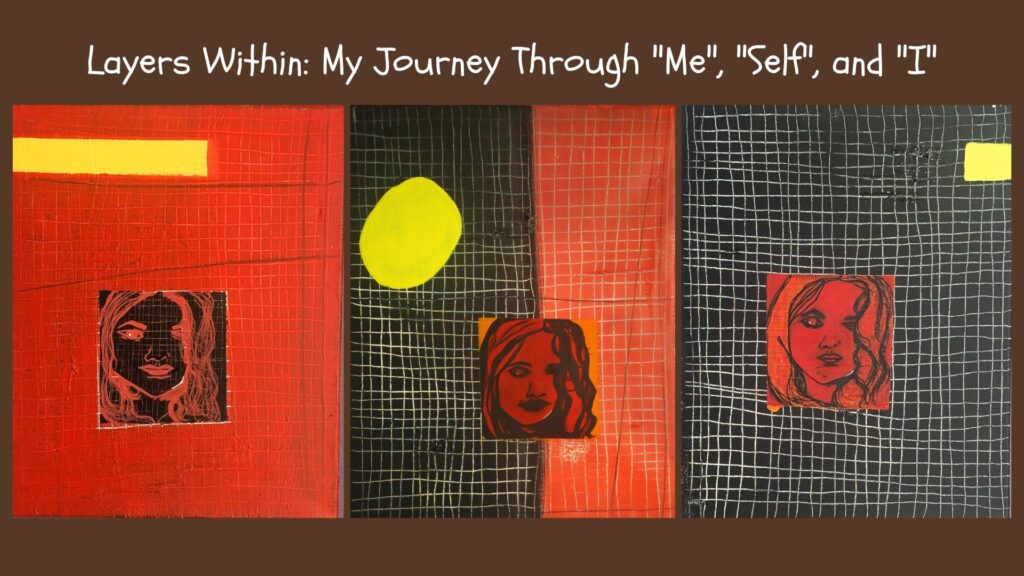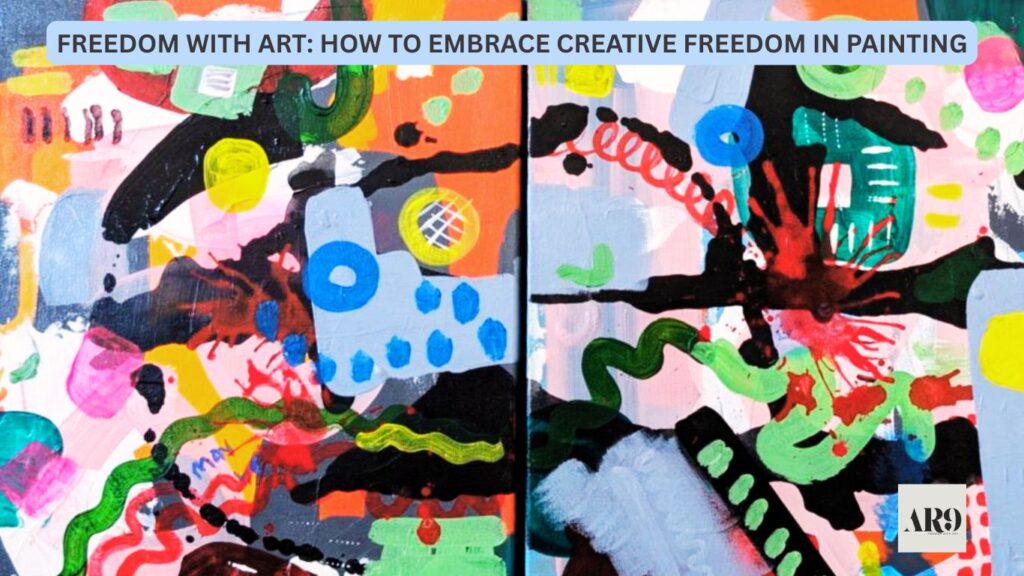
“The mind is like an iceberg—it floats with one-seventh of its bulk above water.”
—Sigmund Freud
That quote stuck with me. Not because it’s profound (though it is), but because it mirrored exactly how I was feeling before I began the “Layers” series. I was carrying so much beneath the surface, old memories, desires I didn’t fully understand, thoughts I never gave words to. And I realized, if I was ever going to explore them, I had to paint them.
So I did.
What followed was a raw, intuitive process that led me to create three paintings: Layers of Me, Layers of Self, and Layers of I. Each canvas became a mirror, not just for who I am, but for the complicated, often unspoken parts of my psyche.
Let me take you behind the brushstrokes.
Layers of Me
I was thinking about boundaries. How much we hide. How even when we smile, a part of us might be crumbling or craving or confused beneath the surface. That’s where this piece began.
I took Freud’s concept of the unconscious and ran with it, not in a clinical sense, but as a way to ask myself, What am I not letting myself feel? I laid down a black grid first. Sharp. Controlled. It stood for the compartments I’ve built inside myself, where memories and emotions get locked away.
Then came the red portrait square. Bold, striking, and almost interruptive. That was intentional. It was the version of me that breaks through, sometimes with excitement, sometimes with discomfort. Painting it felt like opening a door I didn’t know I was allowed to open.
That’s the thing about the unconscious. It’s always there. It’s just waiting for us to stop pretending we don’t hear it.
Layers of Self
This one was more emotionally charged. It came from a place of conflict, between who I think I am and who I fear I might be. I was inspired again by Freud, especially the idea that repressed urges don’t just disappear. They linger. They influence.
I started with a divided canvas, black and red. Two worlds. Two minds. Then, I added a vibrant yellow form. That burst of light represented something important to me: the moment of awareness. That flash of Oh… so that’s what I’m feeling.
In the middle, I painted a red face. That face? It wasn’t polished. It wasn’t “ready.” But it was real.
Painting this felt like letting my subconscious speak in a voice louder than my inner critic. It was cathartic. It was uncomfortable. It was necessary.
Layers of I
I wanted to go deeper here. Past the face I show, past the stories I tell myself. Inspired again by the structure of Freud’s psyche, the id, ego, and superego, I asked, What would it look like to paint the architecture of my mind?
I bathed the canvas in deep red. It felt primal. Urgent. Then, I laid a subtle grid over it, barely visible, but there. That was my nod to structure. To the systems we build internally to cope, to control, to survive.
The portrait that emerged was quieter than the others. Not screaming. Just being. It carried with it all the weight of unspoken impulses and quiet truths I’ve been ignoring.
The act of painting this was almost meditative. I wasn’t just creating a face, I was meeting it.
Each of these pieces was an excavation. Not of memory alone, but of motive. Of pain. Of joy. Of patterns that repeat themselves when we’re not paying attention.
But more than that, the “Layers” series taught me something actionable: making art isn’t just about expression—it’s about confrontation. About making space for the things we’re afraid to say out loud, and translating them into form, color, texture.
If you’re an artist, or even if you’re just trying to better understand yourself, I urge you to pause. Sit with a feeling. Trace its root. And then, draw it, paint it, write it. Let it become real.
Because what remains unspoken doesn’t go away. It just waits. And sometimes, the only way to move forward… is to finally listen.
Art heals. But only if we’re honest with it.
And these three paintings? They were the most honest conversations I’ve ever had, with myself.

